High-speed rail travel represents the pinnacle of efficient transportation, seamlessly blending speed and comfort. From Japan’s pioneering Shinkansen bullet train to France’s iconic TGV, the evolution of high-speed trains has dramatically reshaped how we travel. But How Fast Do Trains Travel in this modern era?
These advancements offer a compelling alternative to air travel, fostering economic development, drastically cutting travel times, and presenting a more environmentally conscious option.
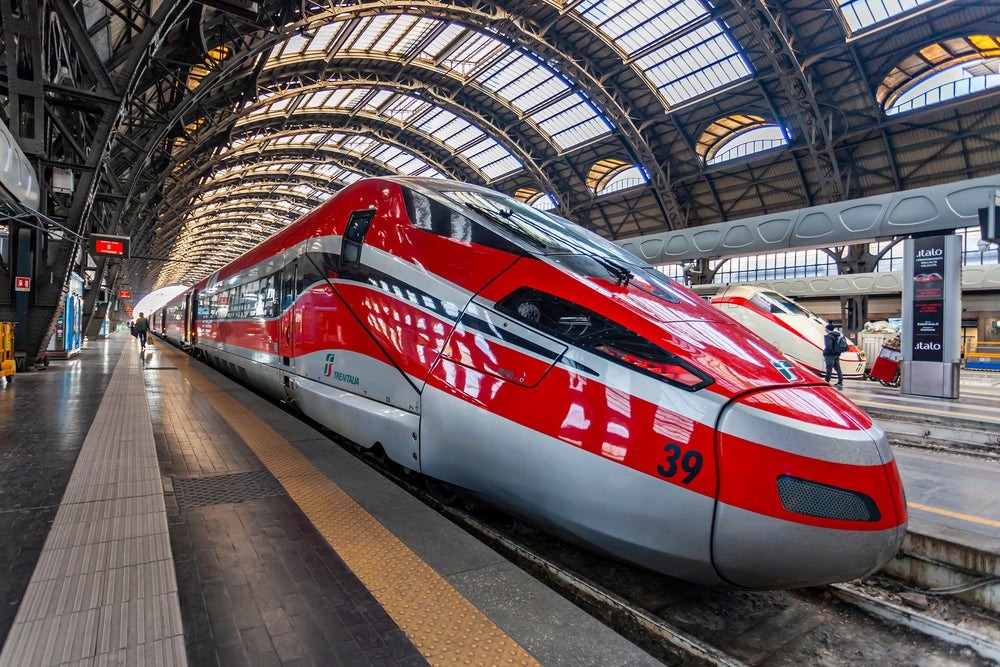 A Frecciarossa 1000 train at Milan Centrale station, Italy, showcasing modern high-speed rail design.
A Frecciarossa 1000 train at Milan Centrale station, Italy, showcasing modern high-speed rail design.
The competitive landscape is intensifying, with budget-friendly high-speed options emerging across Europe and beyond. Countries like Germany, Italy, France, Spain, China, and Japan boast expansive high-speed rail networks, where trains regularly achieve speeds exceeding 300km/h.
The future promises further expansion and technological breakthroughs in high-speed rail. Ambitious projects are underway, including California high-speed rail, though some face significant hurdles. The development of magnetic levitation (Maglev) trains, which use electromagnetic force to levitate above the track, holds the potential for even greater speeds and a smoother riding experience. These ongoing improvements in infrastructure and technology point towards a future of increasingly convenient, sustainable, and interconnected travel.
Here’s an updated look at the ten fastest high-speed trains currently in service, ranked by their operational speed, answering the question: how fast do these trains travel?
10. Trenitalia Frecciarossa 1000: 300km/h (Italy)
Trenitalia’s Frecciarossa 1000, also known as ETR1000, represents a collaboration between Hitachi Rail Italy and Alstom. This “red arrow” operates in both Italy and Spain, with Iryo, a private high-speed rail operator, utilizing 20 S 109 trainsets derived from the ETR1000 design. Designed to rival private operators like Italo, the ETR1000 can carry 457 passengers in its eight-car configuration. While its operational speed reaches 300km/h, it achieved 389km/h during testing in 2015.
9. Korail KTX-Sancheon: 305km/h (Korea)
 A KTX-Sancheon high-speed train at Seoul Station, South Korea, highlighting the country's commitment to high-speed rail technology.
A KTX-Sancheon high-speed train at Seoul Station, South Korea, highlighting the country's commitment to high-speed rail technology.
South Korea’s KTX-Sancheon, operated by Korail, reaches speeds of 305km/h. Named after the indigenous cherry salmon, it is the first high-speed train designed and developed in South Korea. With 71 trainsets in service, it can accelerate from 0 to 300km/h in just over five minutes. South Korea is one of only four countries to have developed a train exceeding 420km/h. The next generation EMU-320 is expected to enter service soon, with a planned operational speed of 320km/h and faster acceleration.
8. Renfe AVE 103: 310km/h (Spain)
The Renfe Class 103, also known as Series 103 or S103, is manufactured by Siemens as part of the Velaro family, reaching speeds of 310 km/h on the Barcelona–Madrid high-speed railway. Twenty-six of these trainsets carry up to 404 passengers each. In 2006, an S103 achieved a record top speed of 403.7km/h, marking a Spanish record for rail vehicles. The unique 8-car configuration consists of two identical half-trains, each with an independent power system.
7. ONCF Al Boraq: 320km/h (Morocco)
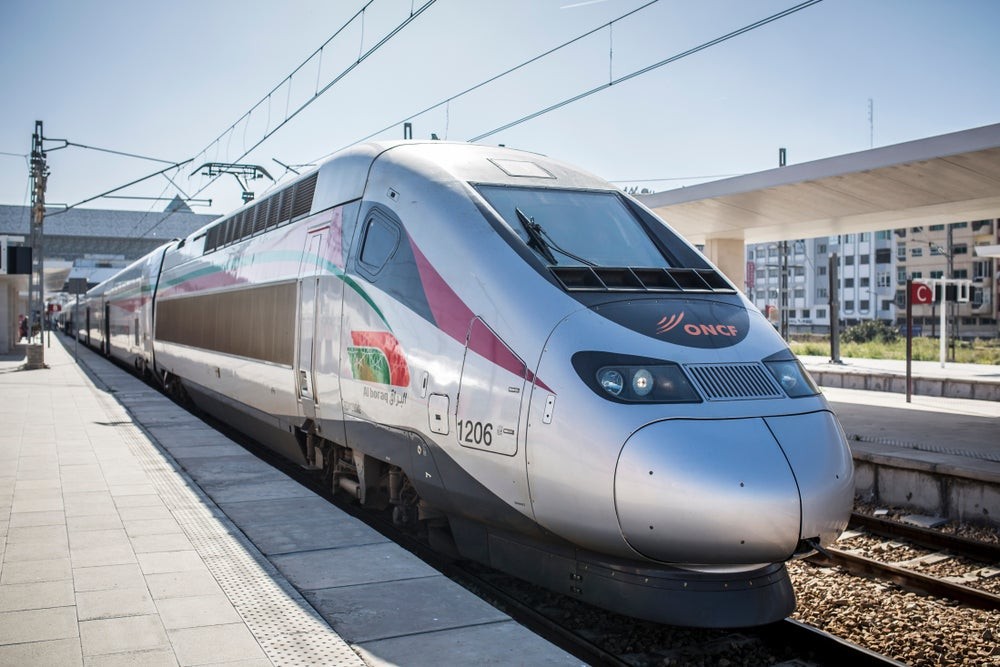 An Al-Boraq high-speed train at Casablanca Casa Voyageurs railway station, Morocco, representing Africa's first high-speed rail system.
An Al-Boraq high-speed train at Casablanca Casa Voyageurs railway station, Morocco, representing Africa's first high-speed rail system.
Africa’s first high-speed railway, Al Boraq in Morocco, features trains that reach 320km/h. Operated by ONCF, the line connects Casablanca and Tangier. Using Alstom Avelia Euroduplex trainsets (TGV 2n2f), the Al Boraq line features a newly built high-speed track and an upgraded existing line. These bi-level trains can carry 533 passengers, significantly reducing travel times between major Moroccan cities.
6. JR Shinkansen: 320km/h (Japan)
The world-renowned Shinkansen, or bullet train, operates at a top speed of 320km/h. As the first country to develop a dedicated high-speed railway network, Japan’s Shinkansen revolutionized travel. The current E5 and H5 Series, built by Hitachi Rail and Kawasaki Heavy Industries, achieve this operational speed. The E5 series runs on Tohoku and Hokkaido Shinkansen services, while the H5 is a cold-weather variant with enhanced snowploughs and other protective features.
5. SNCF TGV: 320km/h (France)
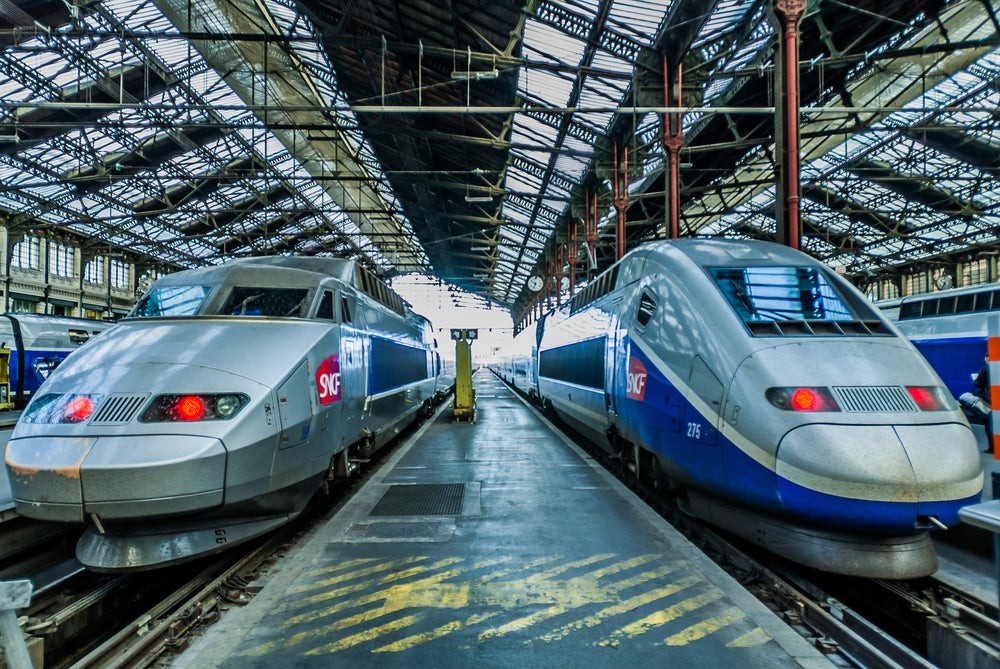 Two TGVs at Gare de Lyon station in Paris, France, showcasing the iconic French high-speed rail design.
Two TGVs at Gare de Lyon station in Paris, France, showcasing the iconic French high-speed rail design.
The Train à Grande Vitesse (TGV) is a symbol of high-speed rail in Europe. Manufactured by Alstom and operated primarily by SNCF, TGV models such as the Duplex, Réseau, POS, and Euroduplex reach 320km/h in everyday operation. The TGV network extends beyond France, connecting to Italy, Spain, Belgium, Luxembourg, and Germany. The newest model, TGV-M, is expected to enter service in 2024 with a proposed maximum capability of 350km/h.
4. DB ICE: 350km/h (Germany)
The ICE 3, or Intercity-Express 3, a high-speed electric multiple-unit train manufactured by Siemens and Bombardier, is the flagship of Germany’s high-speed rail. Operated mainly by Deutsche Bahn (DB), the ICE 3 family includes classes 403, 406, 407, and 408. While generally operating at 320km/h, the Class 403 is authorized to run at 330km/h on the Frankfurt-Cologne line to compensate for delays.
3. CR Fuxing: 350km/h (China)
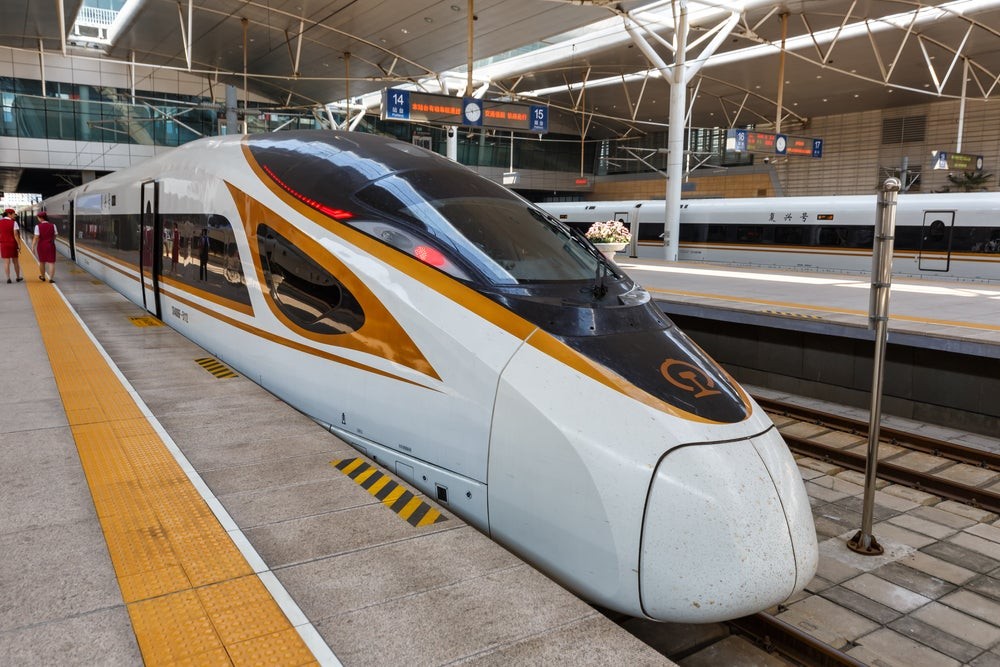 A Chinese Fuxing model waiting at Tianjin station in China, representing China's advancements in high-speed rail technology.
A Chinese Fuxing model waiting at Tianjin station in China, representing China's advancements in high-speed rail technology.
The China Railway (CR) Fuxing, also known as the CR series EMU, operates at 350km/h and has reached 420km/h in tests. These trains are the first completely domestically produced high-speed models in China, without relying on external technology. An 8-car Fuxing set can carry over 500 passengers and is best known for its service on the Beijing–Shanghai high-speed railway. Modified Fuxing models are even designed to operate at high altitudes, connecting to Tibet.
2. CR Harmony: 350km/h (China)
The China Railway (CR) Hexie, or Harmony, also reaches a top operating speed of 350km/h. Built using existing technology from global manufacturers, the CR Harmony paved the way for the domestic development of the CR Fuxing trains. The CRH380A achieved a recorded speed of 486.1km/h during a test run in 2010.
1. Shanghai Maglev: 460km/h (China)
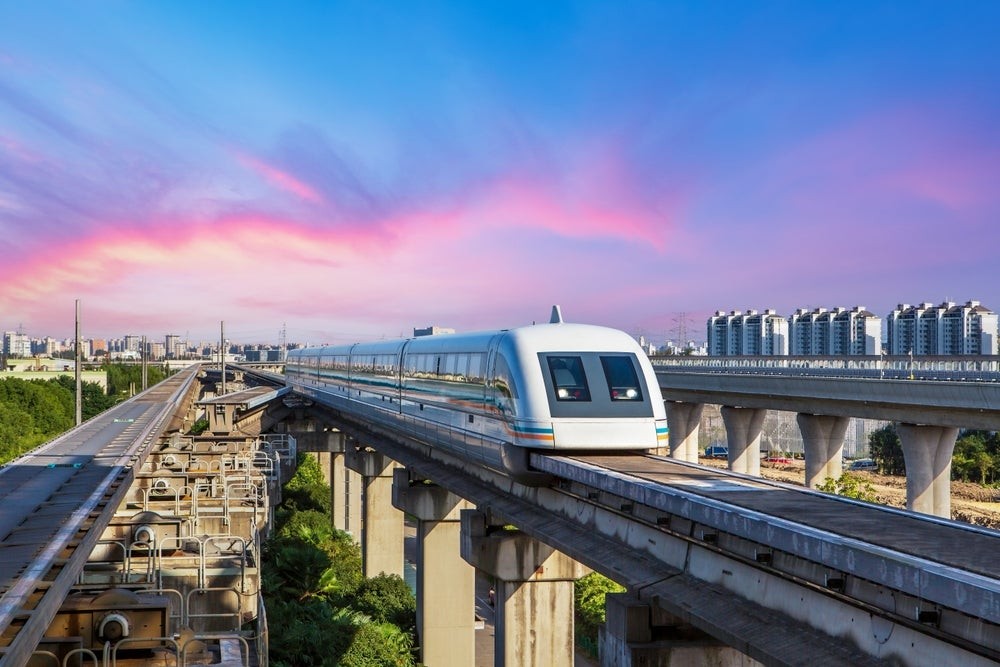 The Shanghai Maglev in operation, demonstrating the speed and efficiency of magnetic levitation technology.
The Shanghai Maglev in operation, demonstrating the speed and efficiency of magnetic levitation technology.
The Shanghai Maglev, or Shanghai Transrapid, leads the list with a maximum operating speed of 460km/h and an average speed of 251km/h. It boasts a record high-speed of 501km/h. Unlike conventional trains, the Maglev uses electromagnetic force to levitate above the track, minimizing friction. This allows for incredibly smooth and quiet travel, covering the 30.5km Shanghai Maglev Line in just under eight minutes.
Conclusion
So, how fast do trains travel? As this list demonstrates, the answer varies significantly, with top speeds ranging from 300km/h to an astounding 460km/h. High-speed rail continues to evolve, promising even faster and more efficient travel experiences in the future. The race for faster trains is on, and these innovations are transforming the way we think about transportation.